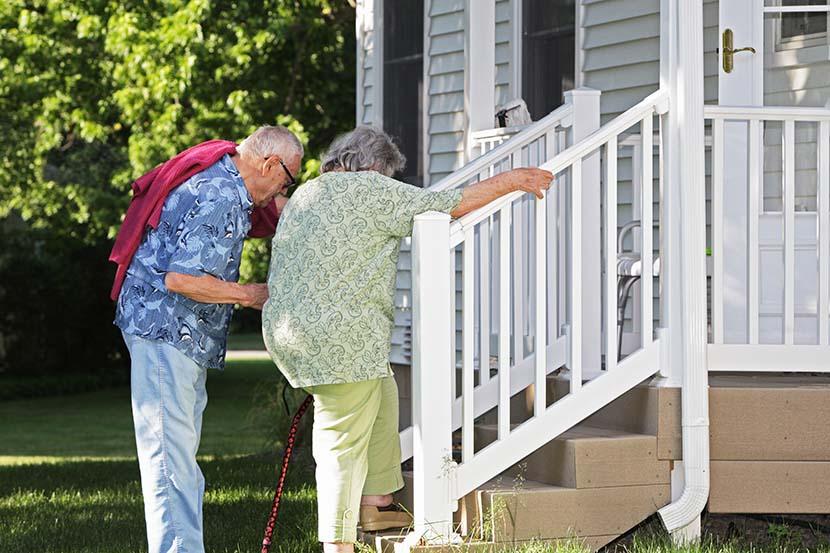We’re on a mission to transform rural healthcare.


At Brightshores Research Institute, we are driving rural health research by combining evaluation rigor with innovative thinking. Guided by a national vision, we strive to improve health outcomes in rural communities by fostering collaboration, embracing new ideas, and sharing our learning with others.
As an independent entity, the Institute operates with a national mandate. Our work reaches beyond specific regions and healthcare providers, focusing on advancing integrated community-based health care and upstream solutions that keep people well. Rooted in evidence-driven approaches, the Institute aims to tackle complex rural health challenges and generate impact.
By moving beyond traditional boundaries and silos, we collaborate with healthcare providers and community organizations, government, academia, and industry to evaluate new and innovative approaches to improve rural healthcare.
Our Vision
Our Mission
Our Values
Research Areas of Focus
Enhancing the Ability for People to Age in Place

Enhancing the Ability for People to Age in Place
Aging is a natural part of life, but how and where we age can make a world of difference. Research shows that seniors who age at home enjoy better physical and mental health, staying more active and socially connected than those in care facilities. Aging in place also provides a sense of independence and is significantly more cost-effective for both families and the healthcare system.
Aging in place, supported by the right care, can mean a longer, happier, and healthier life. Brightshores Research Institute is committed to helping people age where they want to — where they call home. We aim to create innovative solutions that allow older adults to live independently and safely in their communities as they age while also addressing the unique healthcare challenges and opportunities in rural settings.
The Journal of Aging Health found that seniors who stay at home are 20% less likely to suffer from serious illnesses compared to those in nursing homes
A 2017 Harvard study revealed that seniors staying at home had a 30% lower risk of cognitive decline, and are 30% more active —directly correlating to longer life expectancy
68% of Canadian seniors say they feel more connected when they stay at home, and have 45% more social interactions with family and friends compared to those in care facilities
The Canadian Institute for Health Information estimates that for every senior who ages in place, the healthcare system saves between $24,000 and $30,000 annually
Sources:
Powell, A., & Powell, A. (2024, July 15). Alzheimer’s study finds diet, lifestyle changes yield improvements. Harvard Gazette. https://news.harvard.edu/gazette/story/2024/07/alzheimers-study-finds-diet-lifestyle-changes-yield-improvements/
Improving Access to Healthcare

Improving Access to Healthcare
Access to quality healthcare is a significant challenge for people living in rural communities. Residents often face unique barriers to healthcare that urban populations do not encounter, including geographic isolation, a shortage of medical providers, and limited access to specialized care. Brightshores Research Institute aims to redefine healthcare access for people living in rural communities by addressing the challenges and barriers that prevent people from obtaining timely, affordable, and high-quality health services closer to home.
Canadians living in rural areas often must travel five times the distance to access healthcare services compared to their urban counterparts, posing significant barriers to timely medical attention.
Rural and remote areas have more than twice the proportion of ED visits for conditions that could be managed in primary care than urban areas do. 24% of ED visits in rural and remote areas are for such conditions, compared with 11% in urban areas
1 in 4 hospitalizations in rural areas have a high travel burden, especially when residents need specialized care that isn’t available locally.
Sources:
Mitura, V., & Bollman, R. D. (2003, October). The health of rural Canadians: A rural‑urban comparison of health indicators (Rural and Small Town Canada Analysis Bulletin, Vol. 4, No. 6). Statistics Canada. https://www150.statcan.gc.ca/n1/pub/21-006-x/21-006-x2002006-eng.pdf
Canadian Institute for Health Information. (n.d.). Rural health care in Canada. CIHI. https://www.cihi.ca/en/topics/rural-health-care-in-canada
Rural Ontario Municipal Association. (2024, January 21). Fill the gaps closer to home: Improving access to health services for rural Ontario. Rural Ontario Municipal Association. https://www.roma.on.ca/sites/default/files/assets/IMAGES/Home/ROMA%20Report%20-%20Fill%20the%20Gaps%20Closer%20to%20Home%20January%2021%202024%20FINAL%20Draft-Reduced.pdf
Supporting Our Healthcare Workers

Supporting Our Healthcare Workers
Healthcare workers in rural Ontario are facing significant challenges that impact their ability to provide effective care. They are working longer hours than ever before, with increased levels of overtime and absenteeism due to work-related stress. The cumulative effect of staffing shortages and increased workload has led to unprecedented levels of burnout among healthcare workers, affecting their well-being and patient care. These challenges highlight the need for targeted interventions to support healthcare workers and improve access to care in rural Ontario. Brightshores Research Institute aims to better enable the rural healthcare workforce to collaborate more effectively across care settings, reduce their administrative burden and apply the full extent of their training, skills, scope of practice and licensure so they can focus on what matters most to them — caring for their patients.
The number of rural residents without access to a family physician or family health team is increasing four times faster than in urban areas.
Rural communities face critical shortages of healthcare professionals, particularly nurses, which has led to unplanned closures of emergency rooms and limited healthcare options for residents.
65% of rural Ontario municipalities reported that healthcare workers are overwhelmed by heavy workloads, contributing to stress and burnout.
Sources:
Mitura, V., & Bollman, R. D. (2003, October). The health of rural Canadians: A rural‑urban comparison of health indicators (Rural and Small Town Canada Analysis Bulletin, Vol. 4, No. 6). Statistics Canada. https://www150.statcan.gc.ca/n1/pub/21-006-x/21-006-x2002006-eng.pdf
Canadian Institute for Health Information. (n.d.). Rural health care in Canada. CIHI. https://www.cihi.ca/en/topics/rural-health-care-in-canada
Rural Ontario Municipal Association. (2024, January 21). Fill the gaps closer to home: Improving access to health services for rural Ontario. Rural Ontario Municipal Association. https://www.roma.on.ca/sites/default/files/assets/IMAGES/Home/ROMA%20Report%20-%20Fill%20the%20Gaps%20Closer%20to%20Home%20January%2021%202024%20FINAL%20Draft-Reduced.pdf
Our Strategic Plan
Our People
Leadership and Research Team
Board of Directors

Join Us in Shaping the Future of Rural Healthcare.
As we expand our work and impact, we’re seeking dedicated people to help shape our future and ensure our mission continues to thrive in meaningful, sustainable ways.








